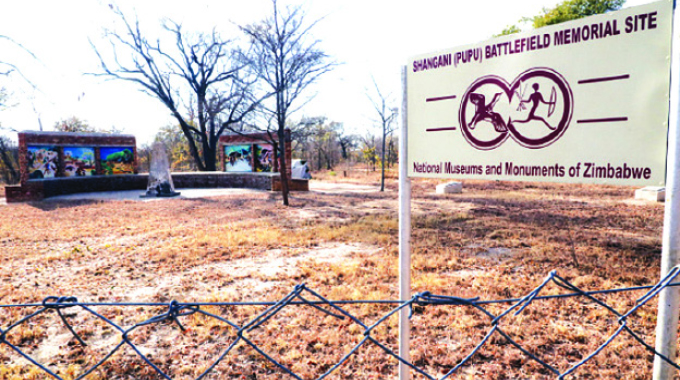Allocate more resources to preserve liberation war history

Ranga Mataire-Group Political Editor
On 8 August 2022, Zimbabwe will commemorate Heroes Day, a public holiday to celebrate outstanding citizens who have contributed immensely to the liberation of the country and have dedicated themselves for the well-being of others.
As a country born out of protracted armed struggle, it is natural that the bulk of those that have so far been declared heroes or heroines took part in the liberation war or contributed to framing, guiding, leading and mobilising masses to support the fight for independence.
Any country that has experienced oppression and embarks on a liberation struggle, whether armed or otherwise, always exalts individuals who would have made it possible to dismantle the oppressive system.
In the case of Zimbabwe, our struggle for independence can be time-marked into two categories; the First and Second Chimurenga. Prominent First Chimurenga heroes and heroines include Mbuya Nehanda, Sekuru Mkwati and Kaguvi, General Mtshana Khumalo, Mapondera and several others.
These were foundational inspirational figures who inspired the Second Chimurenga, which took the form of an armed struggle. One of the earliest political parties to fight for the independence and freedom of Zimbabwe was the National Democratic Party (1960). The NDP advocated for majority rule and was led by the late Dr Joshua Nkomo.
When the NDP was banned, Dr Nkomo and other nationalists that included the Tichafa Samuel Parirenyatwa, Robert Mugabe, Ndabaningi Sithole, Jason Moyo, Joseph Msika and Leopold Takawira formed the Zimbabwe African People’s Union (ZAPU) on December 17, 1961.
After disagreements on the execution of the struggle, some cadres left ZAPU to form the Zimbabwe African National Union (ZANU) on 8 August 1963 at the late national hero Enos Nkala’s house in Old Highfield, then Salisbury. Other founding members included Ndabaningi Sithole, Henry Hamadziripi, Mukudzei Mudzi, Herbert Chitepo, Edgar Tekere and Leopold Takawira.
The two national political organisations (ZAPU and ZANU) formed military wings comprising the Zimbabwe People’s Revolutionary Army (ZIPRA) and the Zimbabwe African National Liberation Army (ZANLA) respectively, to fight the war. ZAPU operated largely from Zambia and Botswana while ZANLA operated from Zambia and Mozambique.
Thousands of young people joined the liberation struggle through these two main liberation movements. The momentum was unstoppable, as many progressive nations like Russia, China, Tanzania, Romania, Egypt and Mozambique provided moral, material, financial and training support to execute the war.
It was the liberation war and the successes scored by both ZANLA and ZAPU that culminated in the Lancaster House negotiations (21 December 1979) in the United Kingdom.
The culmination of majority rule on 18 April 1980 was not an act of charity by the Rhodesian regime. The oppressive system was on the verge of a complete defeat, given the number of liberated zones that had been established throughout the country.
Forty-two years after gaining independence, the same forces that fought hard to undermine the liberation struggle are manifesting under new guises. Some amongst us are making it a past-time to demean and erase the gallantry of sons and daughters who sacrificed all for the freedom of the majority.
Attempts to sanitise Ian Smith’s reign and draw false equivalencies have gained a crescendo on less intellectual sections of social media. The sad thing is that these false equivalencies are being peddled by some of our own. If we care so much about Zimbabwe and its future, then we must never allow this to persists in the name of freedom of expression.
Whatever personal challenges individuals are facing today, this can never erase the selfless heroism of those who fought to dislodge the minority repressive racist system.
The desperate attempts to sanitise Smith, however, point to a serious deficit in documenting the history of the country’s liberation struggle. Technology has made it possible for people to easily access information. Sadly, an avalanche of online content celebrates Rhodesian life. It is the same information that ends up messing up impressionable young minds desperate for an inspirational reference point.
To ensure that the future does not die in the present, it must be made mandatory to learn the history of the liberation struggle from primary to secondary school. The learning must not just be a theoretical endeavour based on some fuzzy theoretical analogies. It must involve physical visits of sites of mass graves, training camps and refugee camps outside the country, assembly points, and concentration villages. Living liberation veterans must be invited to speak to our young people.
This way, our history comes alive to the younger generations. It must never be treated like some distant past.
We need to debunk any aspersions that persuade us to treat our history as a bygone era. No country has ever progressed without a consciousness of its past.
The construction of the Museum of African Liberation is a noble project. A lot more still needs to be done in infusing this history in fields like journalism. Infusing future communicators with an objective appreciation of their country’s history of struggle is one sure way of preserving the sanctity of the of liberation war and its heroes.
National Museum and Monuments of Zimbabwe must do more in preserving various sites dotted around the country that stand as a reminder of the heroism of our people.
One unheralded place, which hold so much importance in exemplifying the valour of our forebearers, is the scene of the Battle of Pupu, which happened 129 years ago.
King Lobengula’s Imbizo Regiment, under the command of General Mtshana Khumalo, defeated the colonialist Allan Wilson’s Patrol at the Battle of Pupu on December 4 in 1893. This is when the first shots of resistance against colonialism were fired in Zimbabwe.
Until recently, the place bore a plaque of the vanquished, and never the victors. The Battle of Pupu is just one such example of many such places, especially from the Second Chimurenga, that to this day lie unheeded and undocumented.








Comments